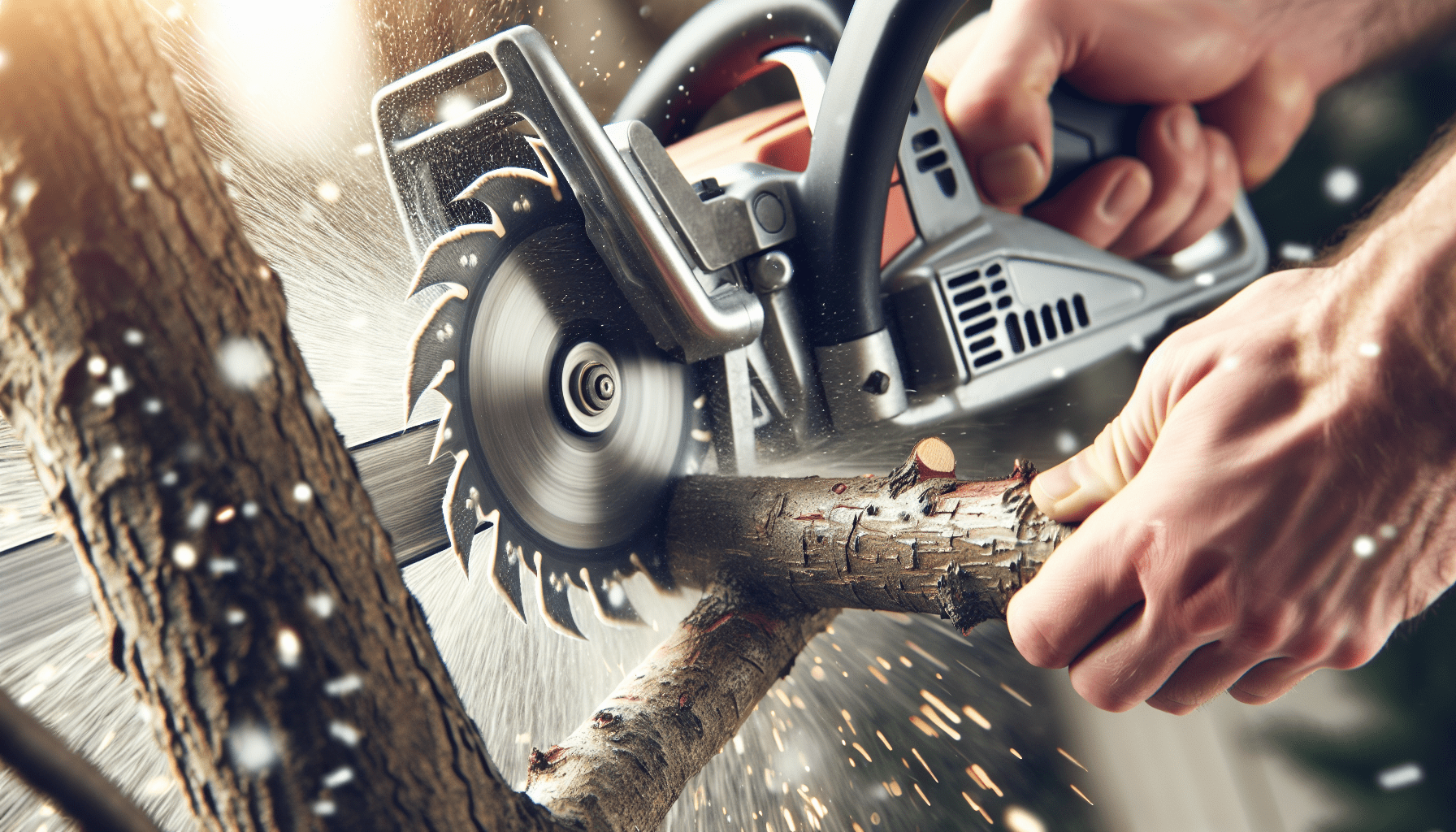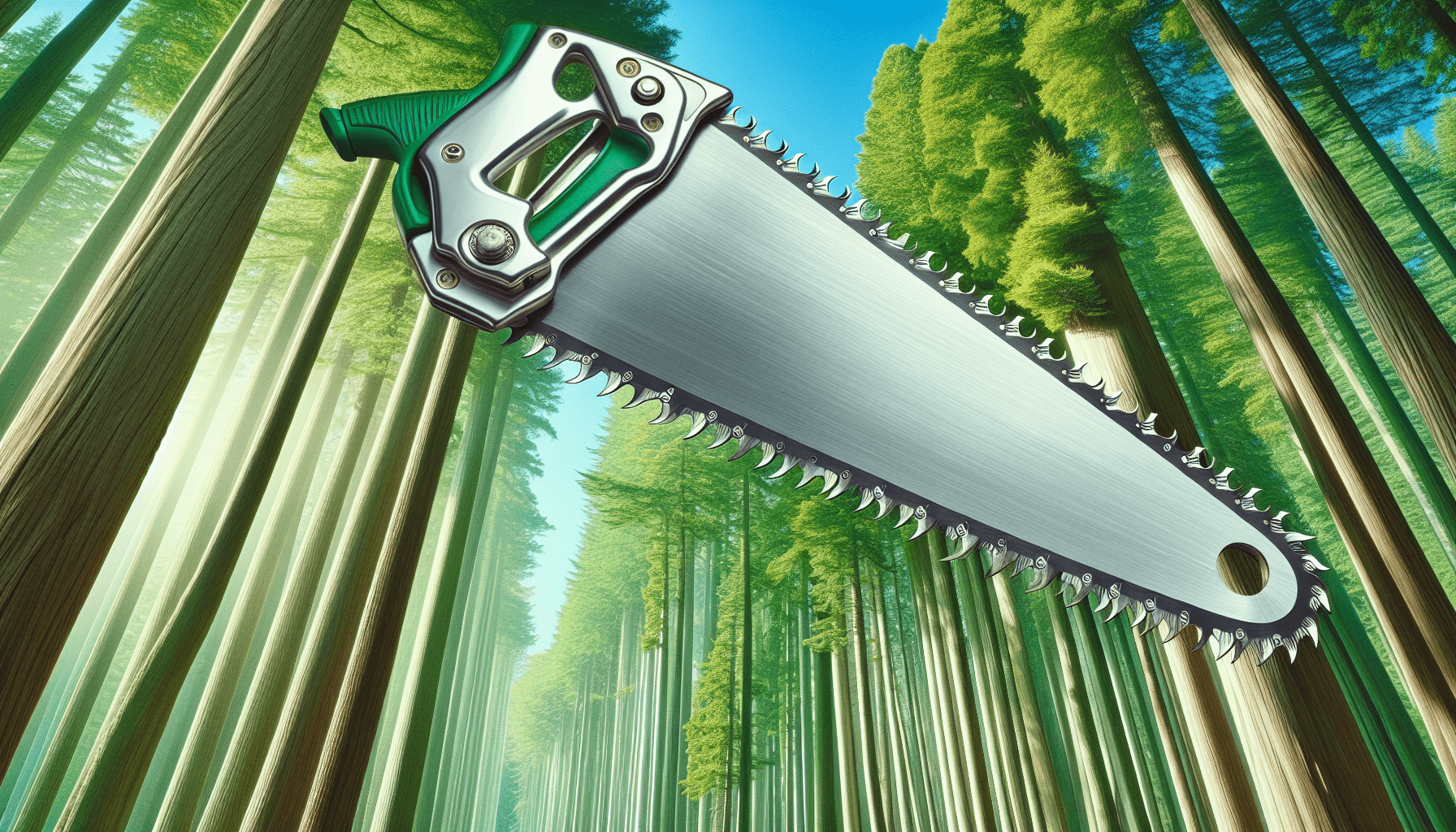If you’re wondering whether a pole saw can handle cutting small branches, the answer is a resounding yes! Pole saws are an incredibly versatile tool that can easily trim and prune small branches with precision and ease. With the right technique and a sharp blade, you’ll be amazed at how quickly and efficiently a pole saw can tackle those smaller branches in your yard or garden. So next time you have some pruning to do, rest assured that your pole saw will get the job done with ease.
Will A Pole Saw Cut Small Branches?
Have you ever found yourself admiring the trees in your backyard only to notice a few small branches that need trimming? You may be wondering if a pole saw is the right tool for the job.
Understanding Pole Saws
Before we delve into whether a pole saw can cut small branches, let’s first understand what a pole saw is. A pole saw is a type of chainsaw attached to an extended pole, allowing you to trim branches that are out of reach without needing a ladder. It is commonly used for trees and branches that are too high for traditional saws to reach.
Types of Pole Saws
There are two main types of pole saws: electric and gas-powered. Electric pole saws are typically lighter and easier to handle, making them ideal for small to medium-sized jobs. Gas-powered pole saws, on the other hand, are more powerful and are better suited for larger branches and tougher jobs.
Can a Pole Saw Cut Small Branches?
The short answer is yes, a pole saw can cut small branches. Pole saws come in various sizes and capacities, making them versatile tools for tackling different types of branches. Whether you’re dealing with thin, delicate branches or thicker, tougher ones, a pole saw can effectively trim them with ease.
Choosing the Right Pole Saw for Small Branches
When it comes to cutting small branches, it’s essential to choose the right pole saw for the job. Here are a few factors to consider:
-
Bar Length: The length of the bar on the pole saw will determine the maximum size of branches it can cut. For small branches, a shorter bar length (around 6-10 inches) should suffice.
-
Power Source: As mentioned earlier, electric pole saws are more suitable for small branches due to their lighter weight and ease of use. Gas-powered pole saws may be overkill for small jobs.
-
Weight: Since you will be working above your head, consider the weight of the pole saw. Opt for a lighter model to reduce strain and fatigue during extended use.
Safety Precautions
Before using a pole saw to cut small branches, it’s crucial to take proper safety precautions to avoid accidents and injuries. Here are some essential safety tips to keep in mind:
-
Wear Protective Gear: Always wear safety goggles, gloves, and sturdy shoes when using a pole saw.
-
Inspect the Area: Before cutting any branches, ensure there are no power lines or obstacles in the way.
-
Keep a Safe Distance: Maintain a safe distance from the branch you are cutting to avoid any injuries from falling debris.
Techniques for Cutting Small Branches
To effectively cut small branches with a pole saw, it’s essential to use the right technique. Here are some tips to help you make clean and precise cuts:
-
Positioning: Stand to the side of the branch you are cutting to minimize the risk of injury from falling branches.
-
Angle: Start cutting at a 45-degree angle to create a small groove in the branch before completing the cut.
-
Smooth Movements: Use smooth and controlled movements when operating the pole saw to ensure a clean cut.
Maintenance Tips for Your Pole Saw
To ensure that your pole saw remains in optimal condition for cutting small branches, it’s essential to perform regular maintenance. Here are some maintenance tips to keep in mind:
-
Sharpen the Blade: Regularly sharpen the blade of your pole saw to ensure clean and efficient cuts.
-
Clean the Saw: Remove any debris and sap from the blade and chain after each use to prevent buildup.
-
Check for Wear and Tear: Inspect the saw for any signs of wear and tear, such as loose parts or damaged components.
Common Mistakes to Avoid
When using a pole saw to cut small branches, it’s easy to make mistakes that can affect the quality of your cuts and potentially cause damage. Here are some common mistakes to avoid:
-
Overreaching: Avoid extending the pole saw beyond its recommended reach, as this can lead to loss of control and accidents.
-
Neglecting Safety Gear: Always wear the necessary safety gear when using a pole saw to prevent injuries.
-
Ignoring Maintenance: Regular maintenance is essential for the longevity and performance of your pole saw. Neglecting maintenance can result in dull blades and inefficient cuts.
Conclusion
In conclusion, a pole saw is a versatile tool that can effectively cut small branches with the right technique and maintenance. By choosing the right pole saw for the job, taking safety precautions, using proper cutting techniques, and performing regular maintenance, you can keep your trees looking tidy and well-maintained. Happy trimming!



